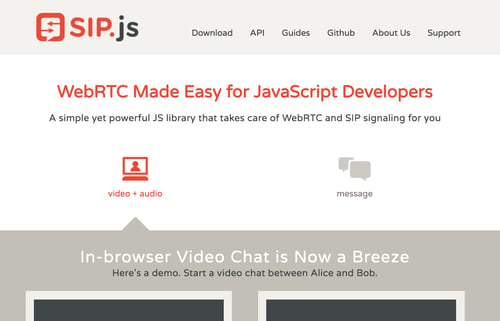Our engineering team just released a few important updates to SIP.js in version 0.10.0. The main highlights of this release: adding support for in-band DTMF and attaching media via Session Description Handler Observer.
SIP.js: WebRTC Made Easy for Developers
SIP.js is an open-sourced JavaScript library that is maintained by the team here at OnSIP. The resource enables developers to harness WebRTC technology and add real-time communications (voice and video calling, text messaging, data transfer, and more) into their web apps.
Recent version updates have added support for all major web browsers, as well as codec renegotiation during an ongoing call. The library can also be the target of a hold for music on hold.

For more details on the past releases of SIP.js, check out our Release Page.
New Features Found in Version 0.10.0
Support has been added for in-band DTMF (currently a beta feature), however it needs to be explicitly enabled via UA config. Our team is updating the underlying APIs in order to make this a default feature of SIP.js; expect that to happen in a future version release. This streamlined process will send DTMF signals on their own media stream, enabling better all-around functionality.
Session Description Handler Observer has also been added to SIP.js, allowing you to stream voice, video, and data on your website with the default WebRTC Session Description Handler.
New Guides and Updated Documentation
Our engineers wrote a new guide for attaching media to your website, available on sipjs.com. The Make a Call and Receive a Call guides now incorporate the full SIP.js API (for advanced use cases). A separate SIP.js Simple guide will get you up and running quickly, but only with basic calling features.
As for what's next: in addition to default in-band DTMF, our team is working on a refactor of the Transport layer. This will make running SIP.js in non-browser environments easier. Stay tuned!

